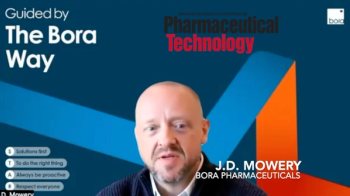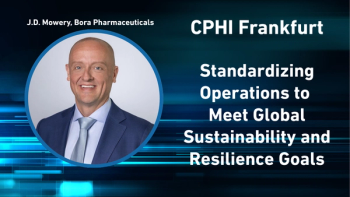
- Pharmaceutical Technology-07-02-2020
- Volume 44
- Issue 7
Unprecedented Times in Vaccines
COVID-19 vaccines are being developed rapidly, giving rise to a reinvigoration of the sector.
Editor’s Note: This article was published in Pharmaceutical Technology Europe’s July 2020 print issue.
It is well known that vaccine development is usually a costly, complex, and lengthy procedure, with estimates of it lasting between 10 to 15 years (1). Yet, in the current pandemic situation, the speed at which developers have responded and managed to achieve in-human testing has been touted as ‘unprecedented’ (2).
When developing a vaccine under normal circumstances (i.e., not in a pandemic situation), there are linear steps that developers tend to follow, which include multiple pauses in order to assess data or check on manufacturing processes (3). However, in a pandemic the timeline is shortened, with faster starts and steps being performed simultaneously without prior confirmation of success, which increases the potential financial risk (3).
Clinical evaluations
At the time of writing, there are 16 candidate vaccines in clinical evaluation, and 125 candidate vaccines in preclinical evaluation for COVID-19 (4). The first to begin Phase III studies, AZD1222-developed by Oxford University and being progressed in partnership with AstraZeneca-already involves 10,000 enrolled participants in the United Kingdom, and trials of the vaccine have also commenced in South Africa (5,6).
AZD1222, formerly known as ChAdOx1 nCoV-19, is a non-replicating viral vector vaccine, which essentially works by tricking the human body into thinking it has the virus, triggering the immune response. Oxford had been previously working on a similar style vaccine to prevent Middle East respiratory syndrome, aiding the speed at which the researchers were able to develop a vaccine targeting the virus that causes COVIDâ19. However, the timeline for AZD1222’s development is still very impressive, a fact that is reinforced by the support from a multitude of European countries for the project (7).
Other in-human trials are also underway, including Imperial College London’s new self-amplifying RNA vaccine (8). Imperial’s approach represents the first time such technology-self-amplifying RNA-has been tested in humans, and the college’s researchers claim it has the potential to revolutionize vaccine development (8).
Funding and the future
Vaccine development requires significant funding, which is generally attained both through public and private organizations. In Europe, the European Commission has raised €9.8 billion in the Global Coronavirus Response pledging campaign that will be used to accelerate vaccines and other technologies to combat COVID-19 (9).
The UK’s government has committed £84 million (€92 million) in new funding for coronavirus vaccine research (10), and in the United States, ‘Operation Warp Speed’ has been initiated, which is aimed at delivering 300 million doses of a safe and effective COVID-19 vaccine by January 2021 (11).
With the financial support of various vaccine programmes, it is no surprise that an impact is being seen on the stock market. Companies, including Novavax and Moderna (12), that are in the COVID-19 vaccine ‘race’ have seen impressive stock price increases, mainly related to innovative techniques leading to accelerated development timescales and positive news stories on trial outcomes.
Although previous disease outbreaks have seen the bio/pharma industry take on huge responsibilities in vaccine development, never before have the efforts been so rapid and so promising. Will the COVID-19 pandemic usher in a new approach to vaccine development? Only time will tell, but there is certainly a reinvigoration of vaccines happening and, as discussed in last month’s editorial (13), public opinion of industry is on the up, which is an added boost.
Stay alert, stay safe, and stay healthy.
References
1. The History of Vaccines, “Vaccine Development, Testing, and Regulation,” historyofvaccines.org, Educational Resource, 17 Jan. 2018.
2. CNBC, “Coronavirus Vaccine is Being Developed at ‘Unprecedented’ Speed, Says Expert,” Interview, 6 April 2020.
3. N. Lurie, et al., N. Engl. J. Med., 382 1969–1973 (2020).
4. WHO, “Draft Landscape of COVID-19 Candidate Vaccines,” who.int [accessed 24 June 2020].
5. Oxford University, “Oxford COVID-19 Vaccine to Begin Phase II/III Human Trials,” ox.ac.uk, Press Release, 22 May 2020.
6. Oxford University, “Trial of Oxford COVID-19 Vaccine in South Africa Begins,” ox.ac.uk, Press Release, 23 June 2020.
7. AstraZeneca, “AstraZeneca to Supply Europe with Up to 400 Million Doses of Oxford University’s Vaccine at No Profit,” Press Release, 13 June 2020.
8. Imperial College London, “First Volunteer Receives Imperial COVID-19 Vaccine,” imperial.ac.uk, Press Release, 23 June 2020.
9. EC, “Coronavirus: Commission Unveils EU Vaccines Strategy,” ec.europa.eu, Press Release, 17 June 2020.
10. UK Government, “Funding and Manufacturing Boost for UK Vaccine Programme,” gov.uk, Press Release, 17 May 2020.
11. HHS, “Fact Sheet: Explaining Operation Warp Speed,” hhs.gov, Press Release, 16 June 2020.
12. V. Ferreira, “These are the COVID-19 Vaccine and Treatment Plays that are Making Investors a Fortune,” business.financialpost.com, News Release, 9 June 2020.
13. F. Thomas, “A Little More Respect,” Pharm. Tech. Eur., 32 (6) 2020.
Article Details
Pharmaceutical Technology Europe
Vol. 32, No. 7
July 2020
Page: 5
Citation
When referring to this article, please cite it as F. Thomas, “Unprecedented Times in Vaccines,” Pharmaceutical Technology Europe 32 (7) 2020.
Articles in this issue
over 5 years ago
Performing Remote Audits During the Pandemicover 5 years ago
Demand for Custom Dosage Forms Fuels Innovationover 5 years ago
Learning Regulatory Lessons in Times of a Crisisover 5 years ago
Business on Hold? EMA’s Full Recovery in Questionover 5 years ago
Taking a Controlled Approachover 5 years ago
No Business, Like Brexit Businessover 5 years ago
Innovating Continuous Twin-Screw Granulation with Foam Deliveryover 5 years ago
Can RNA Simplify Gene Therapy Development?Newsletter
Get the essential updates shaping the future of pharma manufacturing and compliance—subscribe today to Pharmaceutical Technology and never miss a breakthrough.





